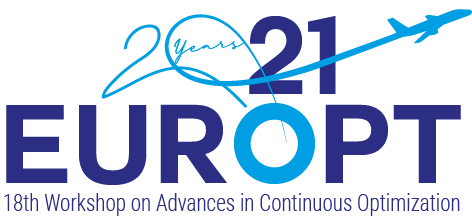TB-04: Energetic and Environmental Applications of Optimization II
Stream: Energetic and Environmental Applications of Optimization
Room: Lagrange
Chair(s): Catherine Choquet
Mixed-Integer Nonlinear Optimization for District Heating Network Expansion
Marius Roland, Martin Schmidt
We present a MINLP for the expansion of district heating networks given a number of candidate consumers. Expansion decisions are made using the stationary state solution for the district heating system taking into account the pressure and thermal losses of the water pipes. We propose an approximation of the thermal energy equation and additional valid inequalities are derived to help global solvers solve the problem. Our numerical results show a trade-off between connecting distant candidate consumers, thus increasing thermal and pressure losses, and the estimated average consumer payment.
Response Surface Optimization of Continuous Packed Bed Adsorption Processes for Textile Wastewater Treatment
Younes Abrouki, Abdelkader Anouzla, Hayat Loukili
In this study, we investigated the response surface optimization of continuous packed bed adsorption processes for textile wastewater treatment using low-cost adsorbent developed from bio-waste. Under the optimal conditions exposed by central composite design, it is possible to eliminate almost the majority of the pollutants present in textile wastewater. It was found that this process using continuous fixed-bed adsorption column filled with biowaste-derived adsorbent was efficient at removing of Pollutants from textile Wastewater.
Numerical validation of a game theory approach for the optimal control problem of groundwater pollution
Moussa Mory DIEDHIOU, Catherine Choquet
We consider a spatial differential game modeling the non-cooperation of two polluters for the optimal control of groundwater quality while maximizing the profit of their polluting activity. Spatio-temporal objectives are constrained by a hydrogeological model for the spread of the pollution in the aquifer which consists in a system of a nonlinear parabolic partial differential equation for the pollutant concentration coupled with an elliptic equation for the velocity of the flow. The problem under consideration belongs to the class of infinite dimensional multiobjective control problems.
